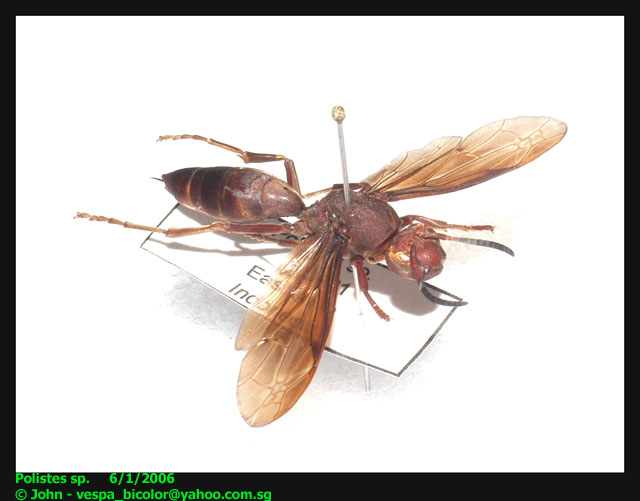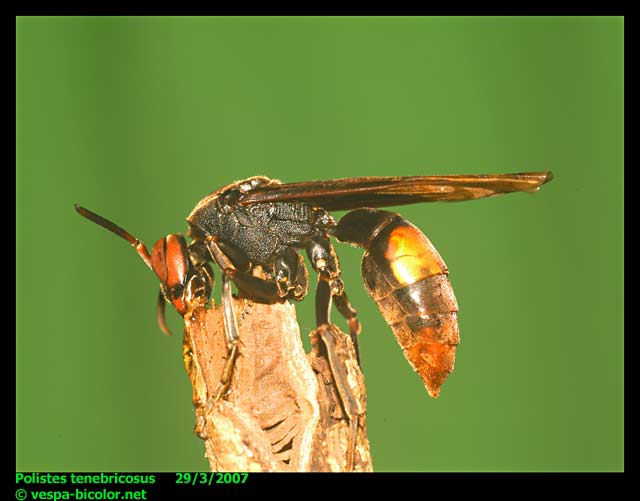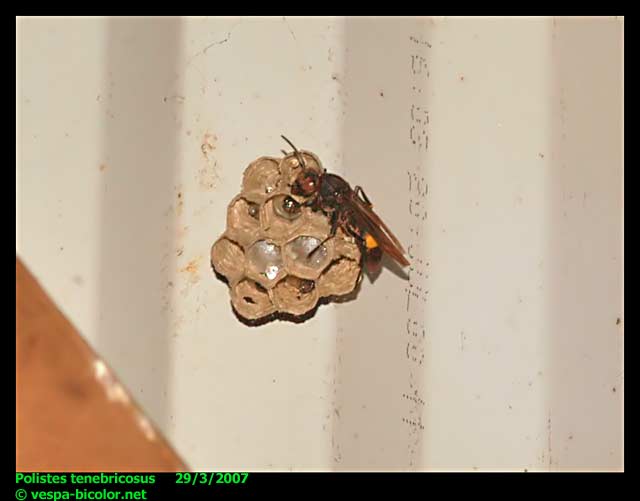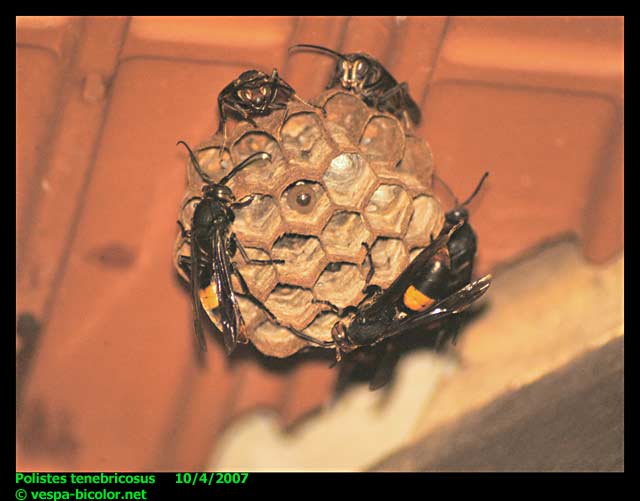
From what I have read, this species is found in several parts of Southeast and East Asia, such as Indonesia, Taiwan, Thailand, Myanmar, Nepal, India and the Phillipines. There are several subspecies which can look quite different from each other in colour and pattern at first glance.

The common colour form is a uniform brown colour; this form is found in Taiwan and parts of Indonesia (Java, Sumatra and Borneo).
However, another colour form I found in Singapore shows strong resemblance to Polistes sagittarius! In fact, I described this species as a "giant Polistes sagittarius" in my trip reports, not knowing what it was at the time. Most individuals of Polistes tenebricosus in Singapore are distinctly larger than Polistes sagittarius. Although confirmation of species requires looking at structural characteristics, the two can generally be differentiated by several differences. The head of Polistes tenebricosus is broader and more squarish when viewed from the front, and parts the head and the last two abdominal segments are dark red (both are black in Polistes sagittarius in Singapore). Furthermore, this species has a golden sheen to the abdomen under strong light, which is apparent in these two photos and even more so out in the open.


Polistes tenebricosus is a relatively little-known species, and not much information on it is available. In March 2007 I was fortunate enough to find a locality in which this species is fairly abundant. Reports on this species in Taiwan state that makes deep nests with a centric petiole (the petiole, the stalk which joins the nest to the surface it is attached to is located in the centre of the nest), and nests are located in caves and houses in Taiwan. What I have observed in Singapore so far agrees with this. The cells are very deep, such that when one larva pupates, another egg can be laid in the same cell and the larva can develop along with the pupa deeper inside the cell. I am not sure of the maximum colony size; all the colonies I saw were not big, but this was during a period of unusually low wasp activity after a long period of abnormally heavy rainfall. Upon capturing a large nest, I had the impression that these wasps are not aggressive at all, since they hardly attempted to defend the nest and only attempted to get away. However, they proved to be able to defend themselves as they became much more aggressive when I kept them in a holding tank for a few days prior to relocation. It is unfortunate to see nests of this rare, unusual and gentle species destroyed (as they commonly are in parks in Singapore), since they pose virtually no threat to the public at all. The two photographs below show a small, newly founded nest and a larger one. The individual at the top right corner of the larger nest is a male; males of this species (at least the subspecies/colour form from Singapore) have an unusual white and black striped pattern on the front of the head.

